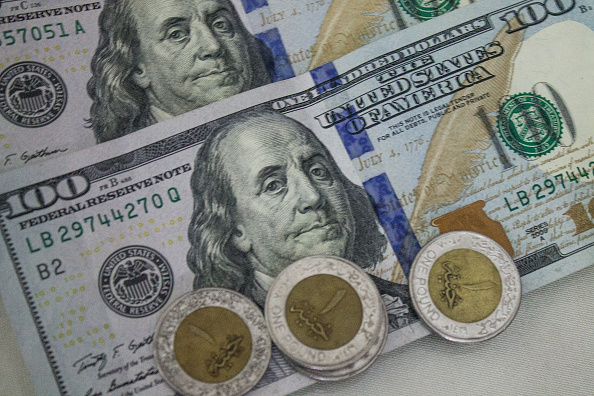
The exchange rate of the Egyptian pound is likely to decline by about 30 percent during the first quarter of next year to 40 Egyptian pounds to the dollar, in parallel with a slowdown in the pace of inflation from 34 percent in 2023 to 27 percent in 2024, according to the BMI research institution affiliated with Fitch Solutions.
The research institution stated, in a report issued at the end of November, that the exchange rate of the Egyptian currency will remain within the range of 31 pounds to the dollar at the beginning of next year, and will subsequently decrease to between 40-45 Egyptian pounds by the end of the first quarter, according to the Asharq Business website.
The scarcity in hard currency Egypt is suffering from has caused the emergence of four different levels of the exchange rate of the dollar against the pound.
This is represented by the official rate in banks, the black market, the gold market, and the Certificate of Deposit (GDR) of CIB Bank on the London Stock Exchange, which has caused unprecedented, difficult economic conditions in the country.
Positive at the financial policy level
The BMI also anticipates that public debt will decline to $310 billion in 2024, compared to $316 billion for the current year, and the debt-to-GDP ratio will diminish to about 95 percent compared to 97 percent this year.
The report also pointed to several factors that may reduce the level of pressures on the balance of payments, including the possibility of reviving the support program with the International Monetary Fund and raising its value from three to five billion dollars.
This comes in addition to the government’s suspension of work that requires a large volume of imported goods.
These factors will reflect positively on inflation levels, which the BMI expects to follow a strong downward path to about 23 percent in February 2024, supported by a stable exchange rate.
However, it also anticipates inflation to rise to 30 percent in the second half of 2024 due to the decline in the exchange rate and expected price increases, before falling to 25 percent by the end of the year.
Authorities may resort to reducing the price of the pound
Egyptian authorities may resort to devaluing the exchange rate early in the new year due to the heavy debt repayment schedule, according to the BMI, which believes that this step would meet one of the basic demands of the International Monetary Fund, to unleash bilateral and multilateral funding, which will help the country bridge the external financing gap.
CAPMAS data earlier in September showed that the annual inflation rate for the country rose to 39.7 percent during August, compared to 15.3 percent last year.
The agency stated that the general index of consumer prices in Egypt increased by 1.6 percent on a monthly basis during August compared to July, scoring 184 points.
Sky-high inflation
The annual consumer price inflation in Egyptian cities rose from 32.7 percent in May to 35.7 percent in June, its highest rate ever, according to data from the Central Agency for Public Mobilization and Statistics (CAPMAS) on September.
The data showed that the annual inflation rate recorded 36.8 percent for June 2023, compared to 33.7 percent for May and 14.7 percent for June 2022.
The general consumer price index for the reached (177.6) points for the month of June 2023, recording an increase of two percent compared to May 2023.
Reuters polled 12 analysts whose average forecast was that annual urban consumer inflation would rise to 34.5 percent in June from 32.7 percent in May, just below the record high recorded in 2017.
CAPMAS said that the reasons for this jump is the increase in the prices of the meat and poultry by 3.3 percent, the fish and seafood by 2.9 percent, dairy, cheese and eggs by 0.4 percent, the oils and fats by 0.2 percent, fruit by 5.7 percent and sugar/sugary foods with 1.4 percent.




